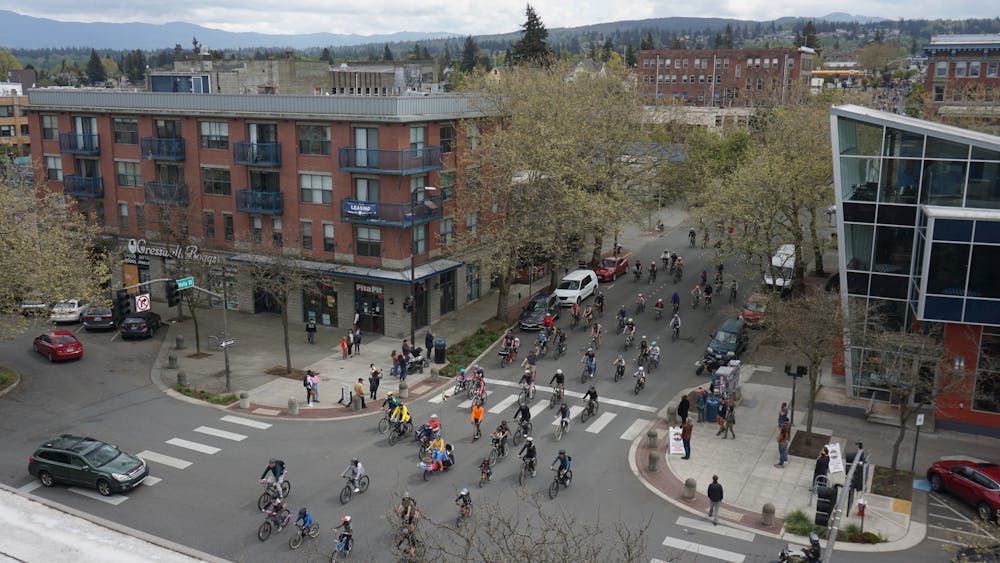Bellingham Bike Parade returned downtown with the hopes of recreating a piece of history, a historic photo from 1948.
The iconic photo, taken by former Bellingham Herald photographer Jack Carver, was taken at the intersection of Holly St. and Railroad Ave. It is now a part of the Whatcom Museum’s Photo Archive collections.
The parade kicked off Bike Everywhere Month, an event for the month of May used to promote the usage of bikes as a primary mode of transportation around the city.
“We hope that people will experience biking downtown in a fun environment,” said Mary Anderson, Transit Planner for the Whatcom Transportation Authority. “By having that fun experience, maybe the next time they go downtown, they might consider biking or walking or riding the bus.”
Whatcom Transportation Authority was a co-sponsor of the event and contributed to a majority of the planning, along with the City of Bellingham, Smart Trips, Whatcom Educational Credit Union and Downtown Bellingham Partnership. The transportation authority is a part of a group called We Bike Downtown that encourages people to explore downtown by bike, foot and bus.
“Having a well-connected bike network also makes it easier for people to ride the bus, and the inverse is true,” Anderson said.
The route began at WECU’s location on E Holly St. and followed a police escort through downtown, ending at Waypoint Park. People from all across the county came out to the event with decorated bikes, costumes, helmets and an overall spirit of community.
“It’s kinda fun, I came because I’m curious about it and I want to see how many people show up,” said Leslie Boswell, a participant in the parade.
Anderson estimated that there were over 780 participants in the event.
“[The organizers’] motivation is pretty much based on our contemporary feelings on bicycle commuting and reducing our carbon footprint,” said Jeffery Jewell of the Whatcom Museum Photo Archives.
Jewell explained the shift from a post-war society dominated by automobiles to a society today which promotes sustainable transportation and a lifestyle that reduces pollution.
“Bicycle Day was sponsored by the police department to promote bike safety for children,” Jewell said. “In 1948, a bicycle was seen as a child’s main form of transportation, it just wasn’t something adults did back then.”
Aside from a shift in the embrace of bicycle usage, changes in culture are also evident with the upgrades in technology.
E-bikes are commonly used throughout the city, making it easier for people to travel around Bellingham’s naturally hilly terrain.
“Ever since I got my e-bike, I’ve been biking way more than I drive my car, which I think is a good thing,” Boswell said.
E-bikes also make sustainable choices around transportation more accessible to all populations.
“You can keep riding into your 60s, 70s and 80s,” said PJ Maguire, a participant in the event. “[The e-bike] changed our lives because now we can ride up the hills again.”
The City of Bellingham’s climate action plans further a commitment to the promotion of sustainability in the city.
Similarly, the WTA's 2040 plan outlines long-term transit goals that are dedicated to environmental protection and efficiency.
Jenelle Baumbach (she/her) is the city news editor for The Front this quarter. She is a senior studying political science and news/editorial journalism. Her past reporting broadly covers local politics, the city council and community interests. In her free time, she enjoys looking at maps and meandering around antique stores. You can reach her at jenellebaumbach.thefront@gmail.com or at citynewseditor.thefront@gmail.com.






